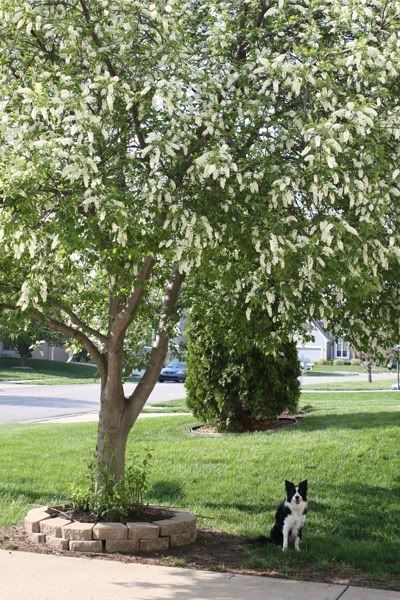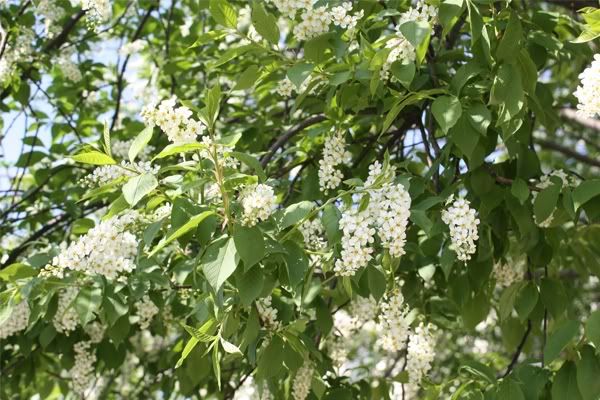Brian, wow, thanks so much for the cool information! Hey be sure to PM me or link back to this thread when you get a chance to photo some of the color intermixing you have in your hives. Thanks to your reply I was able to google the Cordovan honeybee and I found this link which talks about the Carniolan and Italian separately...Yeesh I regret my homemade term "corsican" because it looks too similar to the name Cordovan. Looking at my dark honeybee, it looks suspiciously like the Carniolan bee of this link.
http://www.glenn-apiaries.com/cordovan.htmlI'm probably raiding a beemaster's blog, so if there is a Glenn here, many apologies for snatching the brood, lol!
I also saw a closeup of the tail of the Carniolan bee and it was like seeing a mirror image of mine except with superior photography versus my crappy one.
http://blueberrytalk.files.wordpress.com/2008/08/20080804-bugs-004.jpgI also looked up the Russian honeybee that you mentioned. The Russian bee is close in that it has "dark" in the lower part with the almost olive tan, but it's got way too much wide of an upper band of yellow that's too thick. And the wings are way too long. The wings of my dark bee are identical to the Carniolan, very short, rounded, and amberish in color versus silvery light of my 2010 honeybees and the Italian bees from the links.
Brian I was telling Mshel how honeybees are divas. They will always obsess over their favorite blooms. I think since many apiarists use orchards as feeding grounds or to support a supplementary orchard business, the bees are forced into this locale of the fruiting trees because a honeybee's radius is only 5 miles from what I've googled-researched. An orchard can be very extensive and already takes up a lot of those "miles" and a bee can only fly so far. But left to themselves, feral honeybees are extremely finicky. Once they find their favorite plant they will farm that plant and nowhere else will they go until that plant is basically a stamen stub, and still they will try to milk it. And just like you describe, they "disdain" the pear and someone wrote that they don't like peach blossoms either. I've witnessed feral bees completely ignore all the fruiting trees and swarm only one particular snow fountain cherry. And they don't particularly like the other ornamental cherries-Just the Snowfountain. I used to think if I just get a very fragrant plant with open, very easily accessible stamens surely I'll get a honeybee, but boy was I wrong! Honeybees are supposed to love lilac and honeysuckle. But then I have this gorgeously showy and very fragrant flowering tree which Inga at the Rose Gallery helped me identify this week, the European Bird Cherry. This European Bird Cherry has that same lilac and honeysuckle smell and with very accessible stamens. What in the heck! no honeybee. Don't even mention my Linden tree, they disdain that too.
Here are the photos of my European Bird Cherry. The fragrance is divine and pollinators except for the honeybee love this plant. I see tons of butterflies and little wasps swarm it.


I also need to write up a question about the issues of over-hybridizations of flower species in negatively impacting the honeybee. I have a funny hunch and feeling that a lot of genetic engineering of plants may actually discourage the attractiveness of blooms to the honeybees, but that is another side issue. And I don't want to go off-topic yet.
Just the observations of colors, markings and the subspecies of honeybees being bred is already complex and interesting in of itself.
O.k. my next observation is let's say that all the bees in 2010 are from the same hive. Do feral honeybees ever get territorial in staking out their own forage areas. This can again bear weight that my honeybees are from the same hive. Even in 2011, I noticed that the holly bushes were not visited by any other honeybee besides the Carniolan. Not even a fuzzy hint of the 2010 subspecies anywhere to be glimpsed.
Also Brian, thank you for sending me the term "subspecies" I was stumped as to what to call the different colorations of each bee type. Our area doesn't have "domestic bees" unfortunately, because beehives are outlawed in Johnson County/Overland Park/Kansas City so I am assuming that the bees I have are offshoots of domestic hives that have split off and swarmed elsewhere. Unless of course there is someone secretly hiding a piece of bee paradise somewhere.
A little fun note: Brian, one of the nurseries I visited about 7 miles away has huge, healthy honeybees and they are definitely Italian, very golden, huge yellow stripings, long wings, so beautiful! Very shiny and "glittery" and Big! My dad was accompanying me to the nursery and we were both very impressed with the size of those bees. At Longwood Gardens a couple of miles away from Kansas City, Missouri, they are golden, but much smaller. That was back in 2009. Typically it seems that feral honeybees do not seem to have the huge size of an actual beeyard type of bee. Ironically, that nursery is still in Johnson County/Overland Park, so where those bees came from is a big mystery.